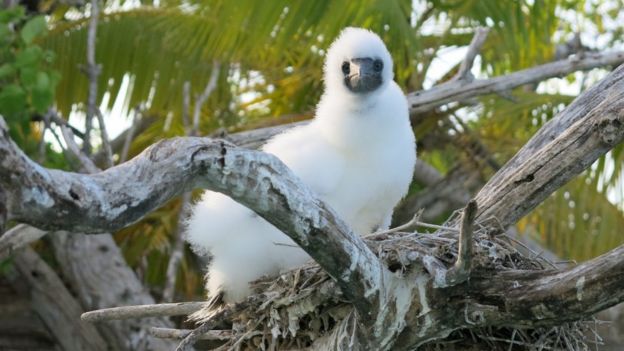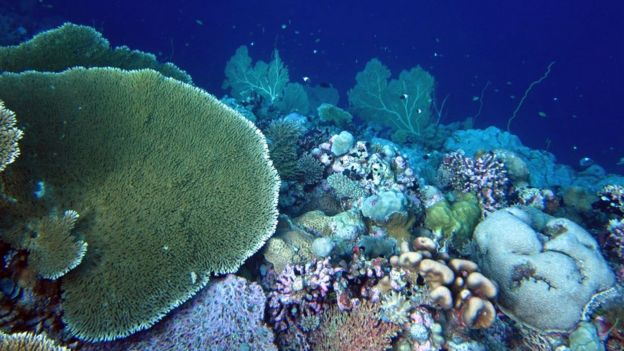The much maligned rat is not a creature many would associate with coral reefs.
But scientists studying reefs on tropical islands say the animals directly threaten the survival of these ecosystems.
A team working on the Chagos Islands in the Indian Ocean found that invasive rats on the islands are a “big problem” for coral reefs.
Rats decimate seabird populations, in turn decimating the volume of bird droppings – a natural coral fertiliser.
The findings are published in Nature.
Scientists now advocate eradicating rats from all of the islands to protect these delicate marine habitats.
How do rats harm coral reefs?
The Chagos Archipelago provided a large-scale natural laboratory to answer this question; although the islands are uninhabited by humans, some of them are now home to invasive rats, brought by ships and shipwrecks. Other islands have remained rat-free.
“The islands with and without rats are like chalk and cheese,” said Prof Nick Graham from Lancaster University.
“The islands with no rats are full of birds, they’re noisy, the sky is full and they smell – because the guano the birds are depositing back on the island is very pungent.
“If you step onto an island with rats, there’s next to no seabirds.”
By killing seabirds, this study revealed, rats disrupt a healthy ecosystem that depends on the seabird droppings, which fertilise the reefs surrounding the island.
On rat-free islands, seabirds including boobies, frigatebirds, noddies, shearwaters and terns travel hundreds of kilometres to feed out in the ocean. When they return to the island, they deposit rich nutrients from the fish they feed on.
“These nutrients are leaching out onto the reef,” explained Prof Graham.

He and his team were able to track the source of those nutrients back to the fish that seabirds fed on by analysing algae and sponges growing on the reef.
“We also found that fish on the reefs adjacent to islands with seabirds were growing faster and were larger for their age than the fish on reefs next to rat-infested islands,” Prof Graham explained.
There were also significantly more fish on rat-free reefs than on those around “ratty islands”.
Why does this matter?
Coral reefs cover less than 0.1% of the ocean’s area, but house about one third of ocean biodiversity.
“Coral reefs are also hugely threatened,” said Prof Graham. “So anyone who cares about extinctions and biodiversity needs to care about the future of coral reefs.”

The reefs and their abundance of marine life provide livelihoods for millions of people around the world, so the decline in coral reefs is poised to become a humanitarian crisis.
This team of researchers advocates rat eradication projects on islands throughout the world.
“Coral reef systems are at crisis point because of climate change,” said Prof Graham. “And we’re desperately trying to find ways to enhance the resilience of coral reefs and allow them to cope with climate change.
“This is one of the clearest examples so far, where eradicating rats will lead to increased numbers of seabirds and this will bolster the coral reef.”
Source: BBC


